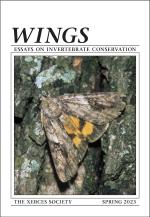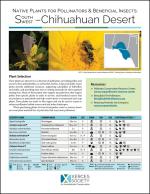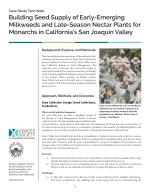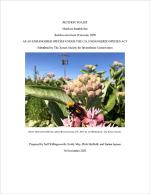As a science-based organization, the Xerces Society produces dozens of publications annually, all of which employ the best available research to guide effective conservation efforts. Our publications range from guidelines for land managers, to brochures offering overviews of key concepts related to invertebrate conservation, from books about supporting pollinators in farmland, to region-specific plant lists. We hope that whatever you are seeking—whether it's guidance on making a home or community garden pollinator-friendly, advice on developing a local pesticide reduction strategy, or detailed information on restoring habitat—you will find it here!
Find Publications
Use the search functions to sort by publication type (books, guidelines, fact sheets, etc.), location, and/or subject (agriculture, gardens, pollinators, pesticides, etc.).
And what you can do to help
Butterflies, bees, dragonflies, beetles, spiders, mussels, and other invertebrates sustain life as we know it. Yet many are declining due to habitat loss, pesticide use, climate change, and more. This brochure shows how we depend on invertebrates, introduces the major threats facing them, and lists some steps we can all take. No action is too small to help these tiny but vital animals.
for Vegetable Producers in the Upper Midwest
Cover crops have many traditional uses on farms, ranging from preventing erosion and improving soil health to suppressing weeds and breaking pest cycles. This bulletin will help farmers and managers use cover crops to attract and support pollinators and other beneficial insects on vegetable farms in the Upper Midwest, while also addressing other resource concerns.
Honey Bees in North America
In the face of ongoing reports of pollinator declines, honey bees are frequently the first bee that comes to mind -- yet these bees are not native to North America and their presence in our landscapes add to the threats facing native bees. This fact sheet provides an overview of the research and science about the impacts of the western honey bee, a species that is not native to North America, has on this continent's thousands of species of native bees, and offers steps to take that will help support all bees.
Identify native plants that attract native pollinators and beneficial insects in the Maritime Northwest region.
This regional plant list highlights native plants that are highly attractive as food sources for adult pollinators; support caterpillars of butterflies and moths; serve as nesting material or sites for certain bees; provide pollen for bees with specialized pollen needs; and feed beneficial predators and parasitoids that contribute to pest control. For those looking for just a few key plants, our staff have flagged their favorites.
Essays on Invertebrate Conservation
At the core of wildlife conservation is the need to ensure that animals have somewhere to feed, breed, and shelter—that is, habitat. Making that habitat the best it can be may mean balancing many issues, which sometimes include human needs. In this issue of Wings, our writers consider the challenges of light pollution, honey bees in North America, and facilitating agriculture in urban areas.
A Handbook for Supporting Soil Invertebrates and Soil Health on Farms
Typically, if soil gets much attention from the general public, it is simply for how well (or poorly) plants grow in it. Soil science—an incredibly rich, complex, and multifaceted academic discipline—has long recognized that Earth’s soils are a dynamic interaction of physical, chemical, and biological properties.
Identify native plants that attract native pollinators and beneficial insects in the Northern Plains region.
This regional plant list highlights native plants that are highly attractive as food sources for adult pollinators; support caterpillars of butterflies and moths; serve as nesting material or sites for certain bees; provide pollen for bees with specialized pollen needs; and feed beneficial predators and parasitoids that contribute to pest control. For those looking for just a few key plants, our staff have flagged their favorites.
This regional plant list highlights native plants that are highly attractive as food sources for adult pollinators; support caterpillars of butterflies and moths; serve as nesting material or sites for certain bees; provide pollen for bees with specialized pollen needs; and feed beneficial predators and parasitoids that contribute to pest control. For those looking for just a few key plants, our staff have flagged their favorites.













